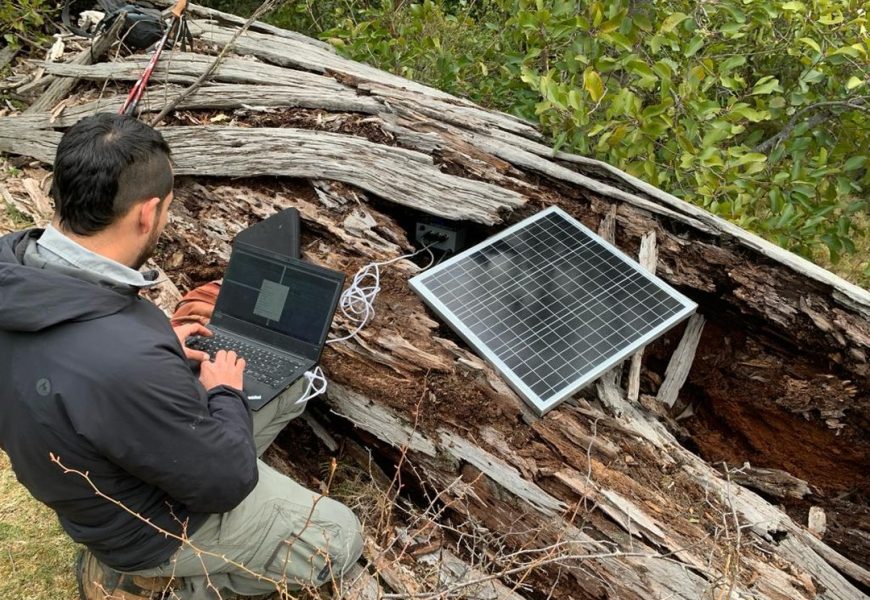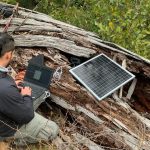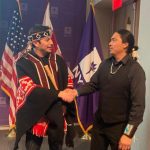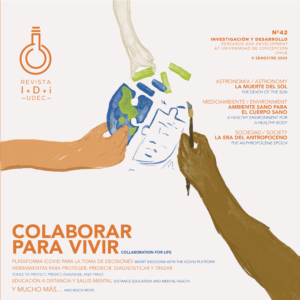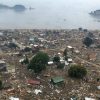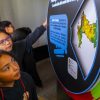By: Iván Tobar, journalist VRID UdeC / ivtobar@udec.cl | Images: Department of Earth Sciences
Chile, part of the Pacific Circle of Fire, is home to ninety active volcanoes, which pose a considerable risk of natural emergencies. The National Geology and Mining Service (Sernageomin, in Spanish) continuously monitors sixty.
An example of this risk is the Villarrica volcano, the most active in Chile. National and foreign researchers, such as Dr. José Luis Palma Lizana from the Department of Earth Sciences, Faculty of Chemical Sciences of the University of Concepción, have studied it.
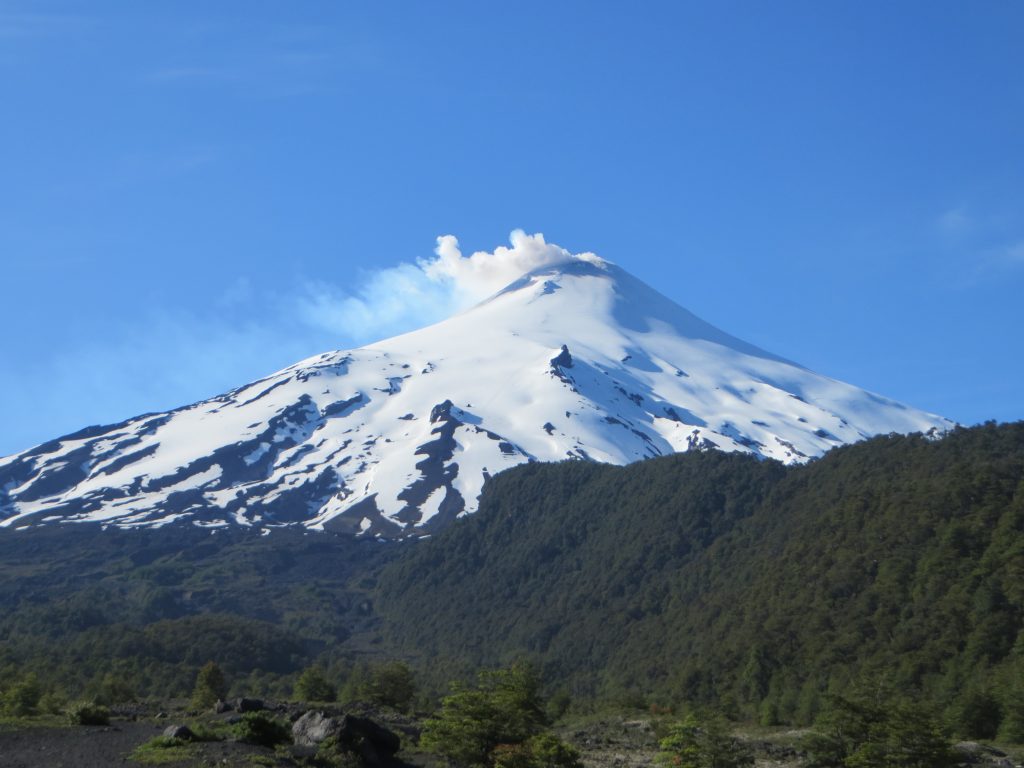
Dr. Palma led the installation of a network of infrasound microphones at different points of the Villarrica volcano, which collects data on its surface activity. “The instruments operate at such low frequencies that the human ear cannot perceive them. All the explosions in the volcano’s crater generate a sound that these instruments capture, providing us with a much more detailed view of what is happening inside, associated with the volcano’s internal processes,” the researcher explains.
Based on these results and thanks to a Fondef IT project, Dr. Palma and his team designed and prepared an alarm system for volcanic and non-volcanic alluvials. “Volcanic alluvials or lahars are one of the main volcanic threats in south-central Chile,” Palma highlights.
Analyzing and mitigating socio-natural risks
Since 2023, with special funds administered by the Vice-Rector’s Office for Research and Development, Dr. Palma has been at the helm of the Environmental Risk Observatory research program (ORA-UdeC). This program is dedicated to fostering interdisciplinary collaboration within the UdeC scientific community, enhancing disaster risk analysis and management capacities, and proposing solutions to current societal challenges.
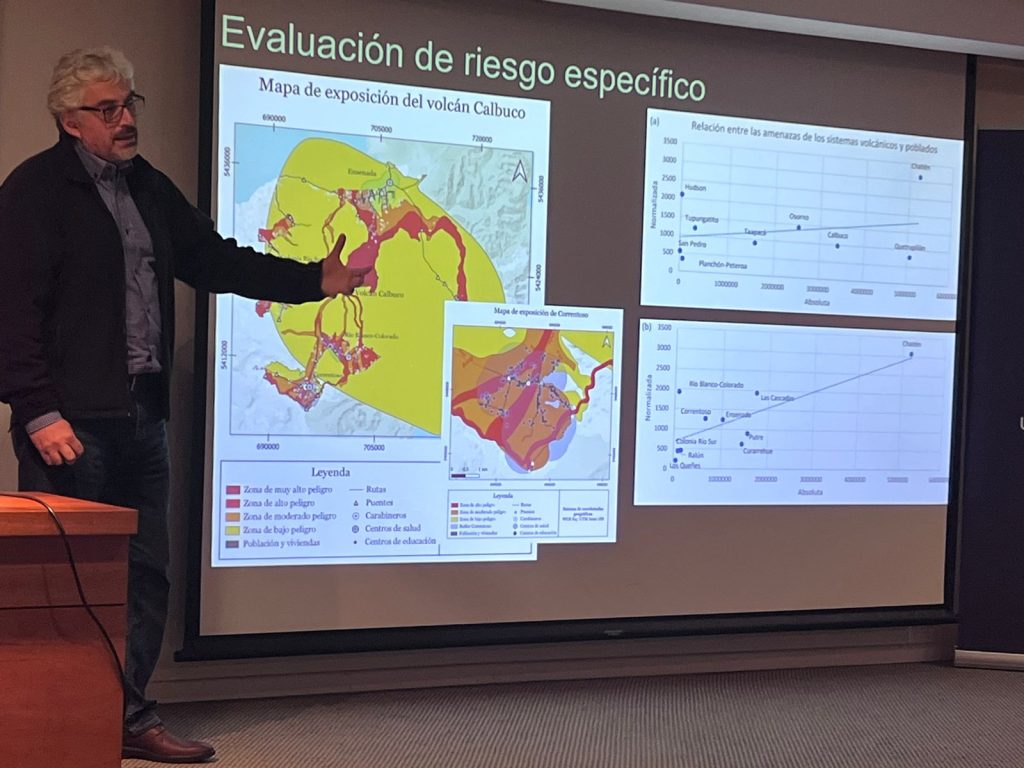
”In addition to volcanic eruptions,” Palma mentions, “the population is exposed to floods, earthquakes, tsunamis, landslides, wildfires, and water shortages. The ORA-UdeC has specialists in all these phenomena and disaster risk assessment and communication.” In terms of access to public funds and international collaboration, a proposal led by Dr. Palma and Dr. Rodrigo Abarca del Río (Department of Geophysics of the Faculty of Physical and Mathematical Sciences) obtained funding from the ANID Public Challenges competition to address a technological challenge posed by the Chilean Air Force’s (SAF, in Spanish) Aerophotogrammetric Service, developing an interoperable tool to process and analyze satellite and geospatial images and quantify damages in emergencies.
In the first stage of this project, geospatial information processes provided by the SAF were run, focusing on wildfires. They are complemented by public information on the exposure of people and infrastructure. “This project has a significant social impact because it uses data from remote satellite sensors to provide information about the occurrence of these phenomena and their impact on the population, improving authorities’ decision-making,” explains Dr. Palma.
National and international linkage
The scientific work of Dr. Palma and his team has allowed UdeC to sign an international collaboration agreement, granting it the category of a National Data Center (CND, in Spanish) of the Chilean Nuclear Energy Commission (CchEN, in Spanish), responsible for the review and upkeep of data of the Nuclear Non-Proliferation Treaty’s (CTBTO, in Spanish) international monitoring network. “This agreement makes our university the first in Chile to complement the work of the CChEN from an academic approach, either for applied research or for the review of potential nuclear tests, crucial given the current international situation,” explains Dr. Palma.
This agreement will also allow access to a wide variety of scientific data. An example is the study of events such as the eruption of the Hunga Tonga-Hunga Ha’apai in 2022. “The eruption of this volcano and its study generated new knowledge about processes never recorded before, thanks to the global monitoring network’s technology. The volcanic explosion generated atmospheric Lamb waves, which were recorded by the network’s stations, circling the world at least four times, comparable to the waves generated by the eruption of Krakatoa in 1883,” explains Dr. Palma. This inter-institutional agreement opens up new opportunities for international collaboration in researching volcanic activity and other natural phenomena.
Last modified: 3 de septiembre de 2025
